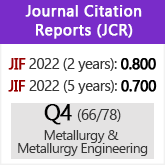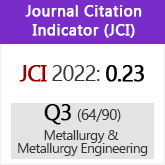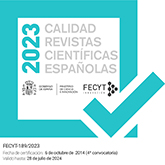Study of the tribological properties of ZrO2 obtained by thermal spraying using the interferometric microscopy
DOI:
https://doi.org/10.3989/revmetalm.2001.v37.i2.458Keywords:
Thermal barrier coatings, Thermal spraying, Tribological properties, Interferometry, Sintering,Abstract
Thermal barrier coatings have a limited mechanical and tribological properties. The sintering thermal treatments can be used to improve these properties. In the present paper the evolution of some mechanical and tribological properties with different time of sintering at 1000 °C is evaluated. It was observed that the sintering thermal treatment produce an increase of the wear resistance, the hardness and the Young modulus. The Ball on disk tests were done using a sliding pair of ZrO2 and steel and the main wear mechanisms for each case were studied. It was observed that the intersplat delamination and the brittle fracture where the main wear mechanisms during sliding process. The wear tracks were studied with scanning electron microscopy (SEM) and scanning white light interferometry (SWLI) so as to quantify the wear for each case. It was necessary to do a gold sputtering to increase the electric conductivity and reflection of the ZrO2 samples for their study by SEM and SWLI respectively.
Downloads
Download data is not yet available.
Downloads
Published
2001-04-30
How to Cite
Guilemany, J. M., Armada, S., & Miguel, J. M. (2001). Study of the tribological properties of ZrO2 obtained by thermal spraying using the interferometric microscopy. Revista De Metalurgia, 37(2), 161–165. https://doi.org/10.3989/revmetalm.2001.v37.i2.458
Issue
Section
Articles
License
Copyright (c) 2001 Consejo Superior de Investigaciones Científicas (CSIC)

This work is licensed under a Creative Commons Attribution 4.0 International License.
© CSIC. Manuscripts published in both the printed and online versions of this Journal are the property of Consejo Superior de Investigaciones Científicas, and quoting this source is a requirement for any partial or full reproduction.All contents of this electronic edition, except where otherwise noted, are distributed under a “Creative Commons Attribution 4.0 International” (CC BY 4.0) License. You may read here the basic information and the legal text of the license. The indication of the CC BY 4.0 License must be expressly stated in this way when necessary.
Self-archiving in repositories, personal webpages or similar, of any version other than the published by the Editor, is not allowed.

















